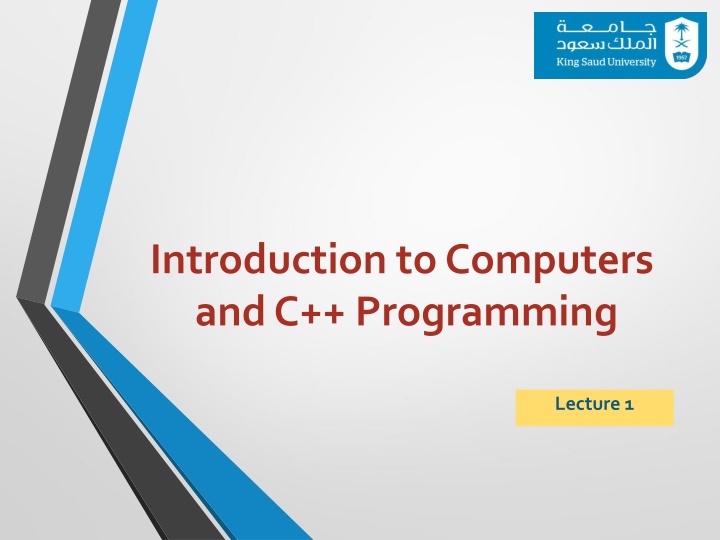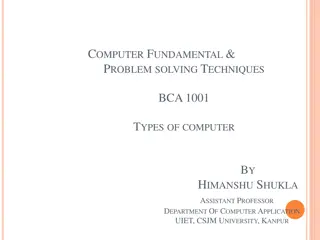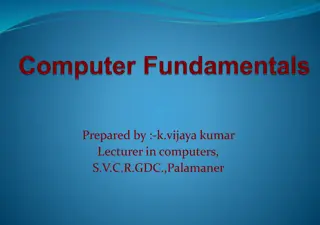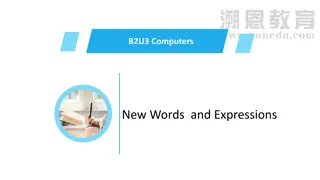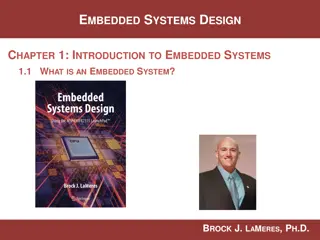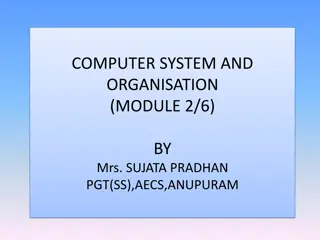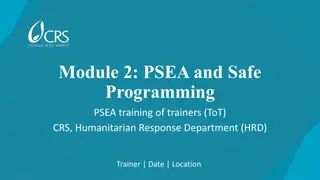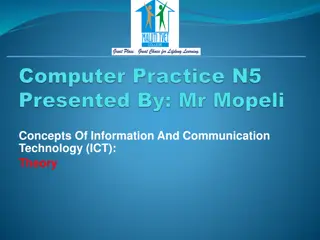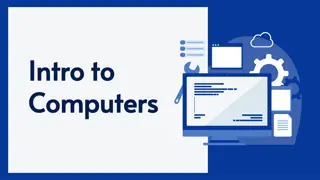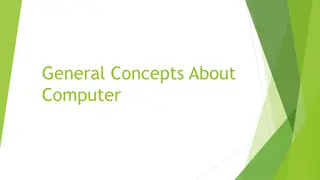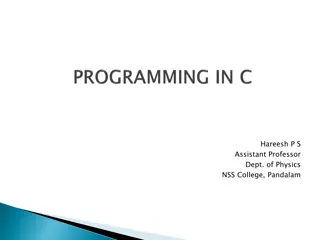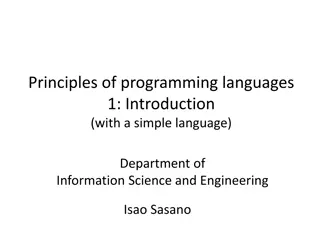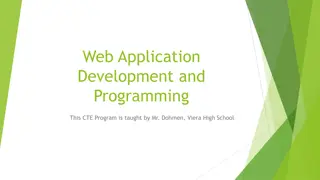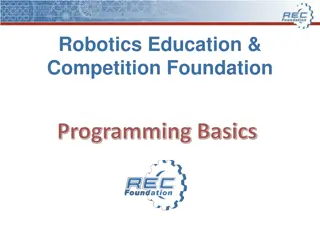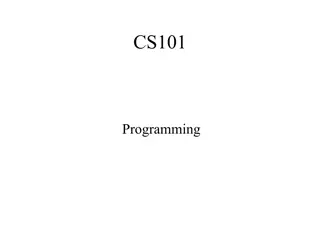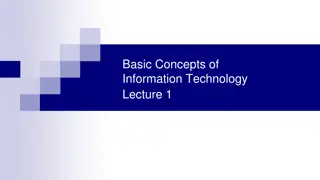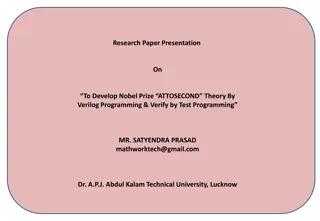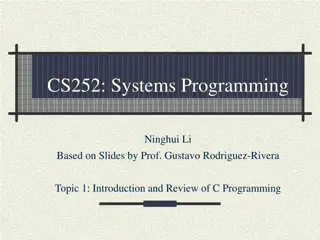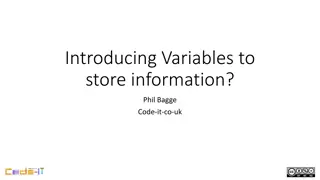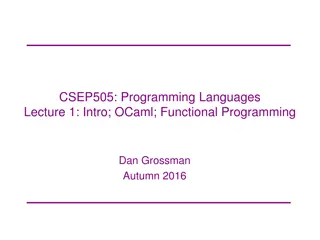Introduction to Computers and C++ Programming Lecture 1 - Overview and Basics
This lecture covers the fundamental concepts in computer systems and programming using C++. Topics include the main components of a computer, bytes and addresses in memory, computer systems hardware and software, understanding programs, programming languages, compilers, preparing and running C++ programs, program design process, and software development methodology. The content provides an introductory insight into the world of computers and programming, setting the foundation for further learning and exploration in the field of C++ programming.
Download Presentation

Please find below an Image/Link to download the presentation.
The content on the website is provided AS IS for your information and personal use only. It may not be sold, licensed, or shared on other websites without obtaining consent from the author.If you encounter any issues during the download, it is possible that the publisher has removed the file from their server.
You are allowed to download the files provided on this website for personal or commercial use, subject to the condition that they are used lawfully. All files are the property of their respective owners.
The content on the website is provided AS IS for your information and personal use only. It may not be sold, licensed, or shared on other websites without obtaining consent from the author.
E N D
Presentation Transcript
Introduction to Computers and C++ Programming Lecture 1
Main Components of a Computer CPU Main memory 00011111 10101100 11100011 Input device(s) Output device(s) Secondary memory
Bytes and Addresses Main memory is divided into numbered locations called bytes. The number associated with a byte is called its address. A group of consecutive bytes is used as the location for a a data item, such as a number or letter. The address of the first byte in the group is used as the address of this larger memory location.
Computer Systems Haedware Workstations Mainframes PCs Software Operating System Programs
What is a program? A program is set of instructions for a computer to follow Whenever we give a computer both a program to follow and some data for the program, we are said to be running the program on the data, and the computer is said to execute the program on the data.
Languages High Level Languages C++ Java Low Level Languages Assembly Language Add X Y Z Machine Language 00011101
Compilers Programs that translate a high-level language like C++ to a machine-language that the computer can directly understand and execute.
Preparing a C++ program for Running C++ program Source Code Compiler Object code for other routines Object code for C++ program Linker
Program Design Process Problem-solving phase Implementation phase Start Translating to C++ Problem definition Testing Algorithm design Desktop testing Working Program
The Software Development Method 1. Specify the problem requirements. 2. Analyze the problem. Input: Output: Formulas: 3.Design the algorithm to solve the problem. 4. Implement the algorithm. 5. Test and verify the completed program. 6. Maintain and update the program.
The Software Life Cycle 1. Analysis and specification of the task (problem definition) 2. Design of the software (algorithm design) 3. Implementation (coding) 4. Testing 5. Maintenance and evolution of the system 6. Obsolescense
Introduction to C++ BCPL B programming language Dennis Ritchie 1970s C programming language Bjarne Stroustrap 1980s C++
Layout of a C++ Program #include <iostream> using namespace std; Program starts here int main() { Variable_Declarations Statement_1 Statement_2 Statement_Last } return 0; Program ends here
Layout of a C++ Program include directive standard namespace #include <iostream> using namespace std; int main() { Variable_Declarations main function Statement_1 Statement_2 Statement_Last executable statements return statement } return 0;
Sample C++ Program #include <iostream> using namespace std; int main() { int number1, number2, sum; cout << "Enter first number: "; cin >> number1; cout << "Enter second number: "; cin >> number2; sum = number1 + number2; cout << "Sum = " << sum << \n ; } return 0;
Compiling and Running a C++ Program
Testing and Debugging Bug A mistake/error in the program Debugging The process of eliminating bugs in a program
Testing and Debugging Types of program errors: Syntax errors Violations of the rules of the programming language Run-time errors Detected by computers when the program is run (numeric calcualtions) Logic errors Mistakes in the underlying algorithm or translating the algorithm into C++ language
Sample C++ Program #include <iostream> using namespace std; Try this: Write a program that displays the product of two integers int main() { int number1, number2, product; cout << "Enter first number: "; cin >> number1; cout << "Enter second number: "; cin >> number2; product = ..? cout << Product = " << product << \n ; } return 0;
